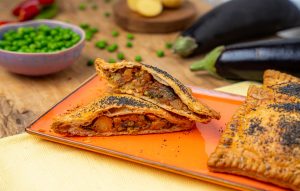
Plant-based nutrition’- sounds like a mouthful right? But let’s break it down, everyone should have access to the best diet for their health but fancy words can often hold people back. This article is going to break down how you can get started with a vegan or plant-based diet and ensure you’re getting all the nutrition you need.
By plant-based we mean a diet that consists of things like vegetables, grains, and pulses. These diets get their energy from sources that derive from plants. There is a slight difference between the vegan diet and the plant-based diet, mainly, that some plant-based diets will include some traces of meat while striving to eat as plant-based as possible. On the other hand, a vegan lifestyle strives to fully eliminate all animal products in food and daily life e.g ditching the leather jacket for the ethical and stylish faux leather.
Understandably, a lot of people struggle to know where they’re going to be able to get all their nutrition from if they start cutting things like fish and meat out. But did you know a lot of professional athletes prefer plant-based diets because they give them more fuel and keep them healthier by lowering cholesterol and blood pressure? While we don’t expect you to start coming out with gold medals, here’s a quick fire guide of where you can get your nutrition from if you switch to a plant-based diet.
- Iron. This is one of the core parts needed in a diet. Especially for the anaemic people out there who keep forgetting to take their tablets. But did you know it can be found in beans (kidney, not Heinz) dried fruit and certain cereals?
- Protein. This can be found in a wide range of things such as quinoa, granola, peanut butter, lentils and tofu. Vegan and plant-based diets can be packed with protein which is why athletes like the Williams sisters swear by it.
- Calcium. When most people think of this they think of cows but there is more calcium in three tablespoons of chia seeds than there is in a glass of milk. So sprinkle these little helpers in your smoothie, porridge or salad and you’re good to go.
- B-12. To make your life easier some fortified cereals add B-12 into the mix so that you can tick that off your nutritional list before the day has even started.
While this guide has not addressed every single nutritional group (because we would need several more hours of your time for that), I hope this has given you information on the nutritional facts you should take into consideration when going plant-based.
Remember, whilst a lot of nutrition can be found in alternative sources, it’s important to tailor your diet to what fits your body's needs.
Michaela Pontiki










